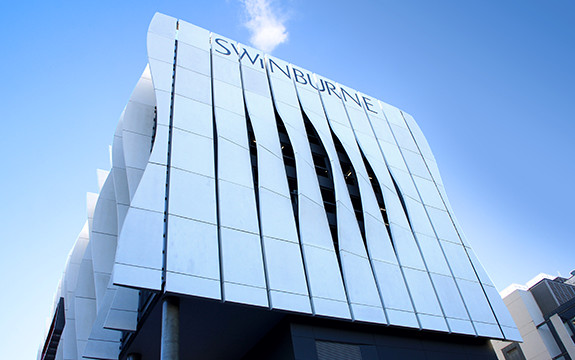Student reporters to uncover the missed and untold election stories

In Summary
Swinburne University of Technology has initiated an exciting multi-university journalism project to cover the Victorian state election.
For the first time journalism students from Swinburne will collaborate with students from three other universities - the University of Melbourne, RMIT and Latrobe - to provide analysis of the important electorates in the lead up to the election in November.
Each tutorial group at each university will cover an electorate in-depth, focusing on candidate profiles and local issues. The aim will be to provide useful information and report the stories that aren’t being covered in that electorate.
Swinburne Journalism Program Director, Dr Andrew Dodd, who described it as “a unique experiment in cross campus co-operation”, initiated the project.
He said he believes it is the first time anything like this has happened and, “if it works, it should be a valuable contribution to public-interest journalism.”
The project, called Unipollwatch, will have its own website and provide coverage of the 32 most interesting seats of the Victorian election.
The Age newspaper is the media partner for Unipollwatch, and will publish the best of the material generated by the student reporters. The newspaper will also link to the unipollwatch.org.au website. The site, which is currently being built, will contain feature stories, as well as background reports and video and audio interviews.
Dr Dodd said Unipollwatch reflects the focus of the Swinburne Journalism degree.
“We believe the best way to learn about journalism is by actually doing journalism, not just theorising about it.”
Dr Dodd said the course aimed to place students in authentic settings where the work produced by them benefited real audiences.
He said this approach mirrored some of the best aspects of cadetship training, in which journalists learnt their craft on the job and were exposed to theory, and ethical and legal questions, by practising their skills.
“There’s another imperative. With less and less investigative reporting happening in newsrooms, our contention is that there is actually a role for universities to play.
“There are fewer people doing investigative stuff so maybe there’s scope for us to step up a bit and do the thing that isn’t being done and offer it for public consumption.”
This is not the first time Swinburne journalism students have been involved in an exercise to uncover stories that received little or no coverage by the mainstream media.
In the first two years of the program, which began in 2010, students trawled through the annual reports of state government departments for a project with Crikey.com.au. In its third year students were asked to go through the submissions to the state parliamentary inquiry into the issue of sexting. Last year they partnered with The Sunday Age to look at controversial planning decisions by the Victorian Civil and Administrative Tribunal (VCAT).
“We have a great bunch of tutors who are all experienced journalists and they take the students through it in much the same way as you would a cadet journalist learning on the job,” Dr Dodd said.
“We try to bring the old style of cadet teaching into the classroom, where the tutor becomes the chief of staff, and works with the students to identify something that is newsworthy and under-reported.”
Read the full story in Venture magazine.

